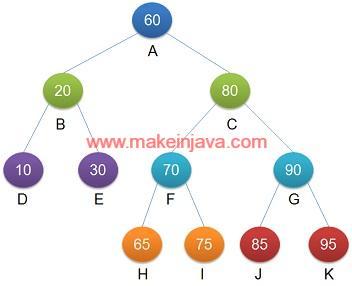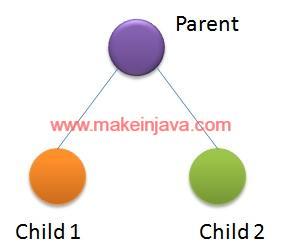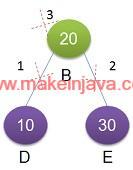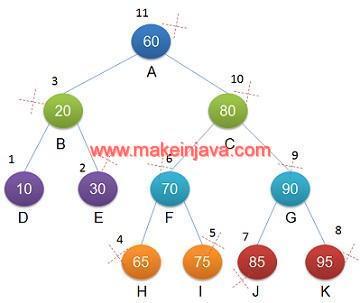- Given a binary tree, we would like to delete all nodes of binary tree using recursive algorithm.
- To delete a binary tree, we will use postOrder traversal of depth first search (dfs) algorithm.
- To delete any node, first we need to delete its children.
- We have already discussed delete a given node from binary search tree (BST) using DFS

Examples: delete all nodes of binary tree using java
Example 1: Delete binary tree shown in Fig 2.
Delete all nodes of a binary tree shown in Fig 2. Binary tree has 3 nodes i.e.
- Parent Node
- Child 1
- Child 2

Algorithm used to delete all nodes of binary tree is as follows:
- Go to parent node
- Delete left child node
- Delete right child Node
- Delete Current Node i.e. current parent node.
Example 2: Delete all nodes of a binary tree using java.
Delete all nodes of binary tree shown in Fig 3:
- Apply Example 1 algorithm to left subtree of Node A (Fig 1).
- Delete Node D & Node E
- Delete Node B & all nodes of subtree will be deleted (Fig 3).

Example 3: Delete all nodes of a binary tree using java.
Delete all nodes of binary tree shown in Fig 1. We have demonstrated the deletion process in Fig 3 as follows:

- Perform postOrder traversal of binary tree.
- Delete left subtree of current node.
- Delete right subtree of current node.
- Delete current node.
- Refer Fig 4 for deletion order of nodes, in a binary tree.
Time complexity of algorithm is O(n).
Program: delete all nodes of binary tree using recursive algorithm in java
1.) DeleteTree Class:
- DeleteTree class deletes all nodes of a binary tree.
- We will traverse the binary tree using depth first search recursive algorithm.
package org.learn.Question;
public class DeleteTree {
public static Node deleteTree(Node root) {
if(null == root) {
return null;
}
root.left = deleteTree(root.left);
root.right = deleteTree(root.right);
root = null;
return root;
}
}
2.) Node Class:
- Node class representing the nodes of a binary tree
package org.learn.Question;
public class Node {
public int data;
public Node left;
public Node right;
public Node(int num) {
this.data = num;
this.left = null;
this.right = null;
}
public Node() {
this.left = null;
this.right = null;
}
public static Node createNode(int number) {
return new Node(number);
}
}
3.) App Class:
- We are constructing the binary tree in main method.
- We will call method of deleteTree class, to delete all nodes of a binary tree.
package org.learn.Client;
import org.learn.Question.DeleteTree;
import org.learn.Question.Node;
public class App
{
public static void main( String[] args )
{
// root level 0
Node A = Node.createNode(60);
// Level 1
Node B = Node.createNode(20);
Node C = Node.createNode(80);
// Level 2
Node D = Node.createNode(10);
Node E = Node.createNode(30);
Node F = Node.createNode(70);
Node G = Node.createNode(90);
// Level 3
Node H = Node.createNode(65);
Node I = Node.createNode(75);
Node J = Node.createNode(85);
Node K = Node.createNode(95);
// connect Level 0 and 1
A.left = B;
A.right = C;
// connect level 1 and level 2
B.left = D;
B.right = E;
C.left = F;
C.right = G;
// connect level 2 and level 3
F.left = H;
F.right = I;
G.left = J;
G.right = K;
Node node = DeleteTree.deleteTree(A);
if(null == node) {
System.out.println("Binary tree deleted successfully");
} else {
System.out.println("Error: Could not delete tree successfully");
}
}
}
Output: delete all nodes of binary tree using recursive algorithm (java)
Binary tree deleted successfully
Download Code – Delete nodes binary tree DFS
